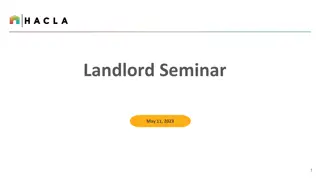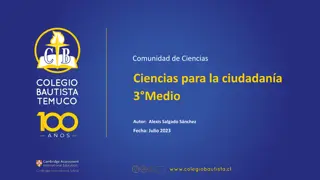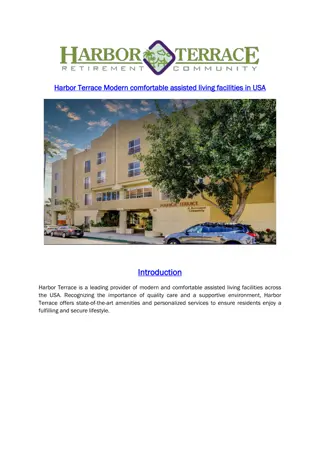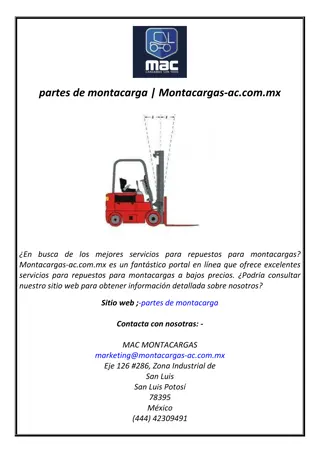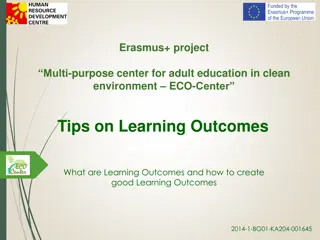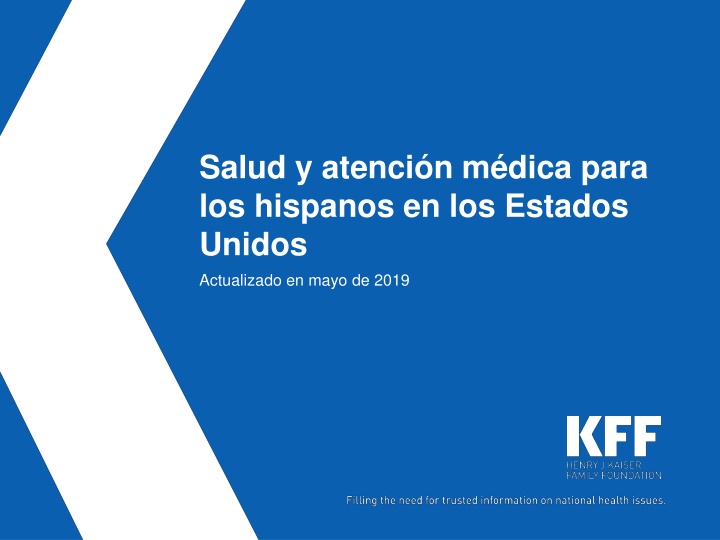
Healthcare Challenges Faced by Hispanic Community in the U.S.
Discover the healthcare challenges encountered by the growing Hispanic population in the United States, including disparities in health conditions, economic status, and access to medical care. Explore statistics and projections on the Hispanic demographic to understand the unique issues faced by this community.
Download Presentation

Please find below an Image/Link to download the presentation.
The content on the website is provided AS IS for your information and personal use only. It may not be sold, licensed, or shared on other websites without obtaining consent from the author. If you encounter any issues during the download, it is possible that the publisher has removed the file from their server.
You are allowed to download the files provided on this website for personal or commercial use, subject to the condition that they are used lawfully. All files are the property of their respective owners.
The content on the website is provided AS IS for your information and personal use only. It may not be sold, licensed, or shared on other websites without obtaining consent from the author.
E N D
Presentation Transcript
Salud y atencin mdica para los hispanos en los Estados Unidos Actualizado en mayo de 2019
Figure 1 Los hispanos constituyen una parte importante y creciente de la poblaci n de los Estados Unidos. 2017: 2060: Cerca de 58 millones de personas son hispanas, esto es casi 1 de cada 5 personas. Se proyecta que m s de 1 de cada 4 personas en los Estados Unidos sea hispana en 2060. Source: Kaiser Family Foundation analysis of 2017 American Community Survey (ACS), 1-Year Estimates and U.S. Census Bureau 2017 National Population Projections Tables, https://www.census.gov/data/tables/2017/demo/popproj/2017-summary-tables.html.
Figure 2 Los hispanos representan una mayor proporci n de la poblaci n en el oeste. PORCENTAJE DE LA POBLACI N TOTAL HISPANA POR ESTADO, 2017 VT WA ME ND MT NH MN OR MA RI NY WI SD ID MI CT WY PA IA NJ OH NE DE DC IN IL NV MD UT VA CO MO KS KY CA NC TN OK SC AR AZ NM GA MS AL < 5% (12 estados) LA TX 5-15% (26 estados + DC) AK FL > 15% (12 estados) Source: Kaiser Family Foundation analysis of 2017 American Community Survey (ACS), 1-Year Estimates.
Figure3 La mayor a de los hispanos son parte de familias con un trabajador, pero suelen se m s pobres que los blancos no hispanos. Tambi n son m s j venes y es m s probable que no sean ciudadanos. Hispano Blanco No Hispano 84% 84% 63%* 49% 21%* 16%* 8% 2% Trabajador de tiempo completo en la familia Ingreso familiar por debajo del nivel de pobreza De 34 a os y m s j venes No ciudadanos * Indicates statistically significant difference from the White population at the p<0.05 level. Note: Persons of Hispanic origin may be of any race; Whites are non-Hispanic and exclude individuals of mixed race. Includes nonelderly individuals 0-64 years of age. Source: Kaiser Family Foundation analysis of 2017 American Community Survey (ACS), 1-Year Estimates.
Figure4 Los hispanos enfrentan una serie de retos de salud. ESTADO DE SALUD Y CONDICIONES DE SALUD SELECCIONADAS ENTRE ADULTOS MENORES DE 65 A OS, 2017 Hispano Blanco No Hispano 33% 30% 11% 9% 9% 7% Salud regular o malo Obesos El doctor les dijo que tienen diabetes Note: Persons of Hispanic origin may be of any race; Whites are non-Hispanic and exclude individuals of mixed race. Includes nonelderly adults 18-64 years of age. All values have a statistically significant difference from the White population at the p<0.05 level. Source: Kaiser Family Foundation analysis of 2017 National Health Interview Survey (NHIS) and 2017 Behavioral Risk Factor Surveillance System (BRFSS).
Figure5 Los hispanos son m s de 3 veces m s propensos a ser diagnosticados con VIH y tienen una tasa de embarazo adolescente m s de 2 veces m s alta que las blancas. Hispano Blanco No Hispano 29 21 13 6 Tasa de diagnosis de VIH entre los adolescentes y adultos, ajustado por edad (por cada 100,000) Tasa de embarazo para adolescentes entre 15 y 19 a os (por cada 1,000) Note: HIV diagnosis rates are for ages 13 and older. For birth rate, persons of Hispanic origin may be of any race; Whites are non- Hispanic. Source: Centers for Disease Control and Prevention, National Center for HIV/AIDS, Viral Hepatitis, STD, and TB Prevention (NCHHSTP) AtlasPlus; Martin JA, Hamilton BE, Osterman MJK, Driscoll AK, Drake P. Births: Final data for 2017. National Vital Statistics Reports; vol 67 no 8. Hyattsville, MD: National Center for Health Statistics. 2018.
Figure6 Entre los adultos menores de 65, los hispanos enfrentan barreras m s grandes para acceder a la atenci n que los blancos no hispanos. Hispano Blanco No Hispano 46% 32% 25% 25% 25% 22% 15% 14% 13% 8% Sin seguro Atrasan atenci n necesaria debido al costo^ Sin una fuente habitual de atenci n Sin una cita m dica^ Sin una cita con el dentista^ Note: ^ Indicates in the past 12 months. Persons of Hispanic origin may be of any race; Whites are non-Hispanic and exclude individuals of mixed race. Includes nonelderly individuals 18-64 years of age. Data for uninsured includes nonelderly adults 19-64 years of age. All values have a statistically significant difference from the White population at the p<0.05 level. Source: Kaiser Family Foundation analysis of 2017 American Community Survey (ACS), 2017 National Health Interview Survey (NHIS), and 2017 Behavioral Risk Factor Surveillance System (BRFSS).
Figure7 Los hispanos son m s propensos de tener otras caracter sticas que afectan la salud. Hispano Blanco No Hispano 75% 26% 18% 10% 9% 6% 6% 3% Se habla otra idioma en la casa que no es ingl s Tienen menos acceso a educaci n secundaria Inseguridad alimentaria en el hogar Los padres informan que sus hijos viven en un vecindario inseguro Note: Persons of Hispanic origin may be of any race; Whites are non-Hispanic and exclude individuals of mixed race. Source: U.S. Census Bureau, 2017 American Community Survey 1-Year Estimates (Language Other than English Spoken at Home and Education, both among nonelderly adults, ages 19-64), U.S. Department of Agriculture, Economic Research Services, Household Food Security in the United States in 2017, Child Trends, Neighborhood Safety, 2016.
Figure8 La tasa de hispanos sin cobertura disminuy bajo ACA, pero todav a tienden a estar menos asegurados que los blancos no hispanos. Tasa de Adultos Menores de 65 Sin Seguro, 2013-2017 Tasa de Ni os Sin Seguro, 2013-2017 Hispano 40% Blanco No Hispano 33% 28% 26% 25% 15% 12% 12% 10% 9% 8% 8% 8% 8% 8% 6% 5% 4% 2015 4% 2017 4% 2016 2013 2014 2015 2016 2017 2013 2014 Note: Nonelderly adults are 19-64 years of age. Children are ages 0-18 years. Whites are non-Hispanic and exclude individuals of mixed race. All values have a statistically significant difference from the White population at the p<0.05 level. Source: Kaiser Family Foundation analysis of 2017 American Community Survey (ACS), 1-Year Estimates.

